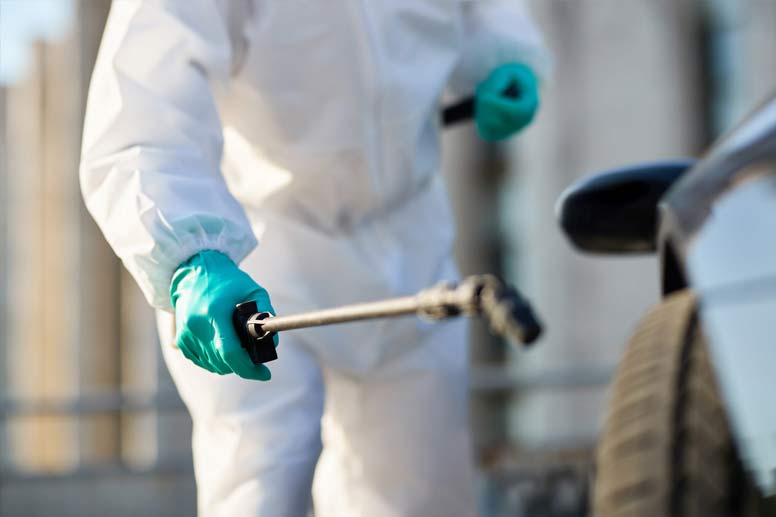How Do You Start a Pest Control Business: Step-by-Step Guide

Table of Contents
If you’re looking for a successful business that’s always in demand, a pest control service might be the answer. Whether it’s insects, rodents, or unwanted wildlife, pests are an ongoing problem for homeowners and businesses and that means they’re willing to pay for professional help.
This guide will break down exactly how to start a pest control business, step-by-step. You don’t need a business degree — just a solid business plan, determination, and the right tools.
Why Start a Pest Control Business?
Pest control is a reliable, recession-resistant industry. Pests are a problem year-round, and homeowners and businesses alike need regular services to keep infestations under control. Here’s why it’s a good option:
- Low Startup Costs: You don’t need a huge amount of money to get started compared to other businesses.
- High Demand: Pests are common everywhere, making this an evergreen service.
- Flexible Work: You can start as a one-person operation and grow over time.
- Recurring Revenue: Many clients need monthly or seasonal visits, which means steady income.
Plus, you’ll be offering a service that gives people peace of mind. Whether it’s helping families sleep better at night or keeping a business pest-free, your work makes a real difference every day.
Different Types of Pest Control Businesses
Pest control covers more than just spraying for bugs. Depending on your area and expertise, you can offer:
- Home Pest Control: Treating houses for ants, roaches, mice, bed bugs, and other common pests.
- Commercial Pest Control: Working with restaurants, offices, and stores to keep pests out.
- Wildlife Removal: Safely dealing with animals like raccoons, squirrels, or birds.
- Termite Treatment: Inspecting and treating homes for wood-damaging termites.
- Mosquito and Tick Control: Seasonal outdoor treatments to make backyards livable.
- Eco-Friendly Pest Control: Offering products or services that reduce chemical use or use natural alternatives.
Start with one or two on your service list and expand as you get more experience and clients. If you’re unsure where to start, focus on common household pests – it’s a market with steady demand. You can always add specialty services like termite treatments or eco-friendly options later.

10 Steps to Follow When Starting Your Pest Control Company
1. Understand Your Local Market
Start by researching pest problems in your area to identify your ideal target audience. Look into:
- The most common pests people face
- What competitors charge for their services
- Who your ideal customer base is—homeowners, landlords, restaurants, or all the above
An easy way to research competitors is to check online reviews on Google or Yelp. Pay attention to what customers complain about: slow response times, high prices, or ineffective treatments. These insights can help you stand out and identify your value proposition in real time.
For example, if local companies are slow to respond, you can market your business as the “same-day service” provider.
2. Plan Your Services and Pricing Strategy
Decide which services you’ll offer and how much you’ll charge. Pricing can vary, but here’s a rough idea:
- General pest control: $100–300 per visit
- Termite treatment: $500–3,000 (depending on the job)
- Wildlife removal: $200–1,000 per animal
When setting your prices, consider your profit margin to ensure your services are both competitive and profitable. Offering subscription plans or seasonal packages can also boost your revenue. For example, monthly checkups to prevent infestations are popular with homeowners. Businesses like restaurants often need ongoing pest prevention contracts, which provide stable income.
To make quoting easier, tools like Invoice Fly’s Estimate Generator let you send quick, professional estimates to potential customers.
3. How Much Does it Cost To Start?
You don’t need to spend a fortune, but there are a few essentials:
- Licensing and Training: $300–1,000 (varies by state)
- Equipment: Sprayers, traps, and safety gear—$1,000–5,000
- Vehicle: A reliable truck or van (buy used if you’re on a budget)
- Liability Insurance: $1,000–3,000 per year for liability coverage
- Marketing Campaigns: Flyers, a website, and Google ads—$500–2,000
If you’re on a tight budget, start small and reinvest in your marketing actions as you grow. For instance, you can begin with residential pest control and upgrade to wildlife or termite treatments later.
4. Get Licensed and Certified
Pest control is regulated in every state, so you’ll need to get the proper business license. Requirements usually include:
- Completing a training course
- Passing a licensing exam
- Following safety guidelines for pesticide application
Check with your state’s regulatory agency for details. You can also visit the EPA’s website for guidance on pesticide safety and certifications.
Getting the right licenses keeps your small business compliant. Additionally, it shows customers you’re a trustworthy, qualified professional they can rely on.

5. Register Your Business
To make it official:
- Choose a business structure (LLC, sole proprietorship, etc.)
- Register with your state
- Get an Employer Identification Number (EIN) for taxes
- Open a business bank account
These steps keep your finances organised and protect your personal assets. A separate account also makes it easier to track business expenses, which is helpful come tax time.
6. Buy the Right Equipment
At a minimum, you’ll need:
- Sprayers and pesticide applicators
- Traps and bait stations
- Safety gear (masks, gloves, goggles)
- Monitoring tools (moisture meters, pest detectors)
If you’re offering wildlife removal, you’ll need specialised equipment like cages and exclusion tools. Starting a business with high-quality gear ensures better results and fewer replacements.
7. Build Your Brand
Your brand image is how customers see you, so make it professional and trustworthy. Focus on:
- A clear business name that’s easy to remember
- A simple, clean logo
- A website that explains your services and makes booking easy
- Vehicle decals so people see you around town
Consistency is key—use the same branding across your invoices, estimates, and marketing materials. Tools like InvoiceFly’s Export to PDF help create professional, branded invoices that reinforce your reputation.
8. Start Marketing Your Pest Control Business
Finding customers is all about getting your name out there — and having a solid marketing strategy is the key to being consistent. Here’s some cost-effective ways to get started:
- Google My Business: List your business so local customers can find you.
- Flyers: Drop them off in neighbourhoods, especially after local pest outbreaks.
- Social Media Platforms: Post pest control tips, before-and-after photos, and existing customer reviews.
- Referrals: Offer discounts to customers who refer friends.
- Targeting Marketing: Run small online ads, for example Google or Facebook ads, targeting homeowners and businesses.
Tip: Happy customers are your best advertisers. Ask them to leave reviews on google or other platforms to boost your reputation. Share customer experiences on social media or your website – it shows real results from loyal customers and builds trust with new ones.
9. Hire as You Grow
Once your business picks up and you begin to see an increase in sales, you’ll need extra hands. Look for technicians who:
- Have proper certifications
- Are reliable and customer-friendly
- Understand safety when handling chemicals
Hiring the right team lets you expand without sacrificing quality.

10. Use Software to Stay Organised
Running a pest control business means managing schedules, invoices, and customer details. Software like InvoiceFly’s Pest Control Software can help you:
- Schedule appointments efficiently
- Send invoices and track payments
- Manage customer information and follow-ups
Staying organised saves time and keeps customers happy.
Ready To Get Rid of the Competition?
Starting a pest control business doesn’t need to be overwhelming. With the right tools and business plan, you can build a service people rely on year-round. Focus on solving customer problems, offering great customer service, and keeping your business simple at first.
Make becoming a small business owner easier by checking out InvoiceFly’s Pest Control Software. It handles scheduling, invoicing, and payments so you can focus on keeping your customers pest-free.
